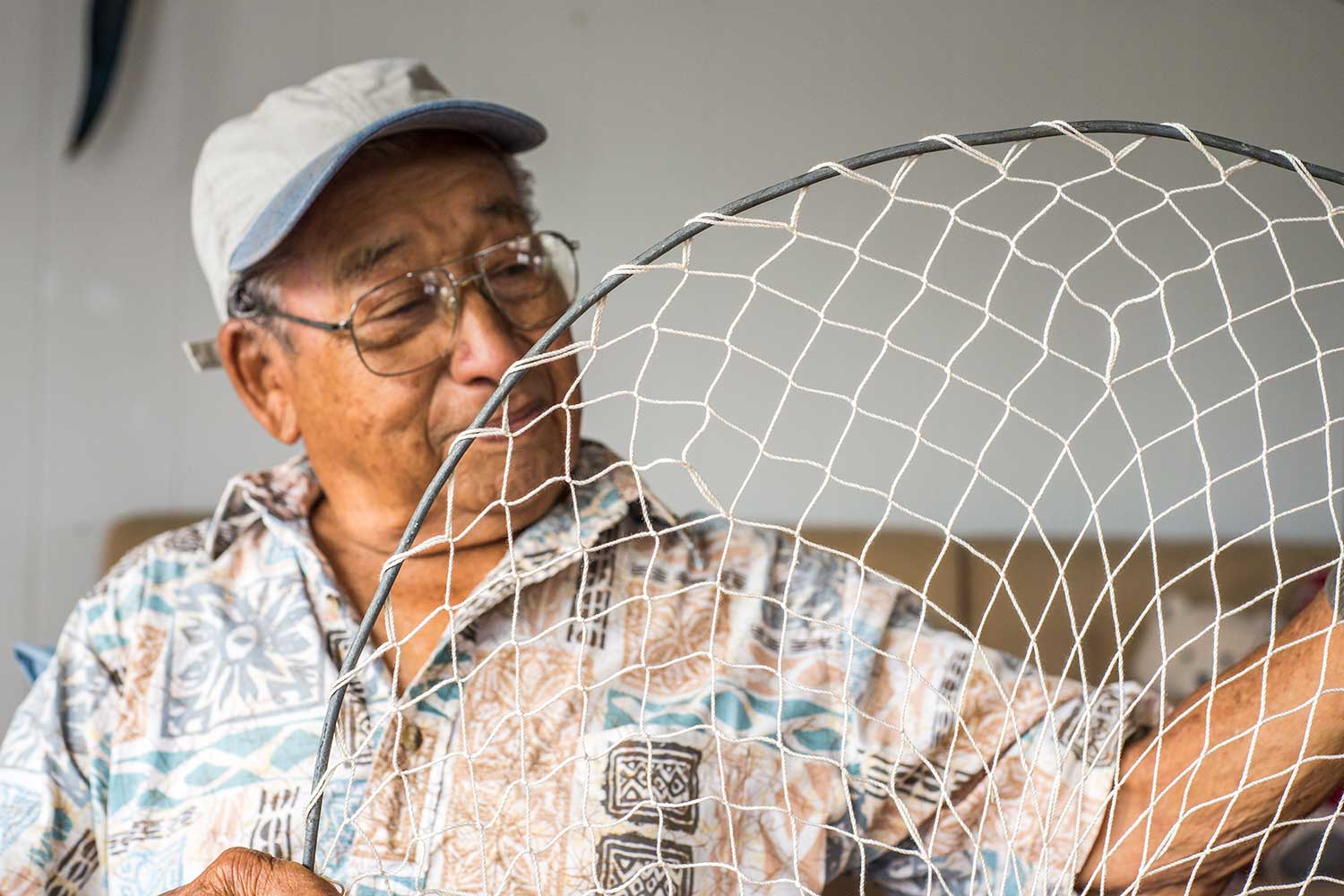“The first step is to learn how to tie a knot. And it’s not easy! It can take up to two hours to explain,” says master net maker John Yu. His eyes twinkle behind his glasses as he fingers the knots in the monofilament fishing net that he is working on at his home in Kāne‘ohe. He moves his handmade wooden spacer and bamboo hi‘a (needle) with deliberate motions. One throw net can take Yu two months to finish, with smaller crab nets taking just a few hours. He steals moments throughout the day to weave. Retired after 40 years as a heavy-equipment operator, the soft-spoken grandfather seems to enjoy making nets more than using them, often giving them as gifts when they’re done, or selling them through word of mouth. “It’s about the fun of making your own net, whether it’s out of cotton, linen, or monofilament—whatever,” he explains. “It’s your choice.”
Born the sixth child of ten in a Korean-Spanish family, Yu was raised in Punalu‘u, a sleepy town deep on O‘ahu’s east side. He was working at Princess Kawānanakoa’s home as a maintenance worker with his father when a Filipino gardener taught 10-year-old Yu how to make a net, showing him how to tie intricate square knots, as well as how to craft the bamboo needles needed to do so. Yu has since adapted his own method, using bowline knots and not one but two needles. The key to a successful net, he tells me, is to add a line of “double eyes” in the weaving, which allows his nets to expand from 8 feet to 15 feet, and to spread flat.
While Yu may still go fishing out on Kāne‘ohe Bay from time to time as he did as a child, he is just as happy teaching others the tradition of net making. He leads a class of students eager to learn how to make a throw net, crab net, or decorative net for buoys or Christmas ornaments at Nā Mea Hawai‘i in Ward Warehouse, free of charge (except for the $5 cost of the bamboo needle). For some attendees, making a net is simply another arts-and-crafts technique to learn. Others hope to actually fish with their creations one day. Yu encourages previous students to come back and learn the next stage of net making. “I just want to keep up the tradition so the new generation can say they can sew a net.”
Find additional cultural classes like Yu’s, including lauhala weaving and lei making, at Nā Mea Hawai‘i, which also carries a unique selection of Native Hawaiian books and other goods. Nā Mea Hawai‘i is located at Ward Warehouse at 1050 Ala Moana Blvd. For more information, visit nameahawaii.com.

































Share: